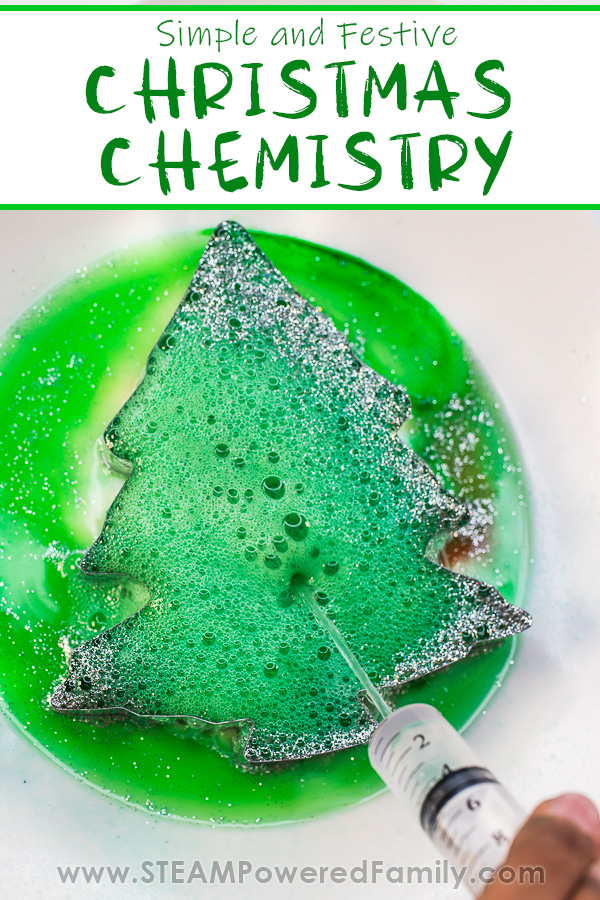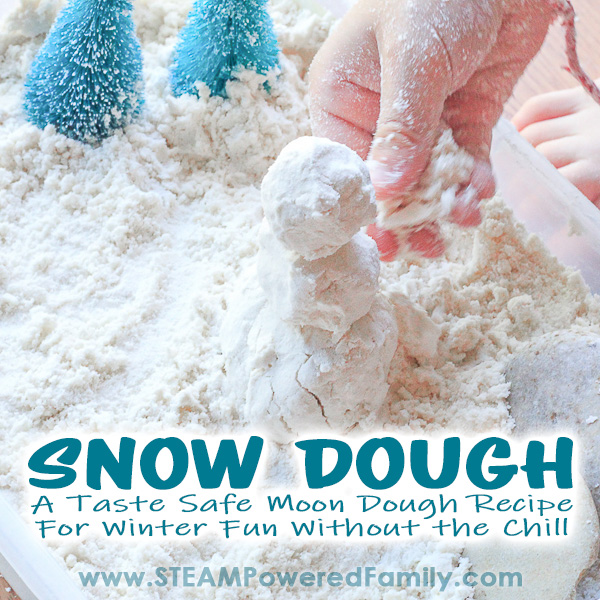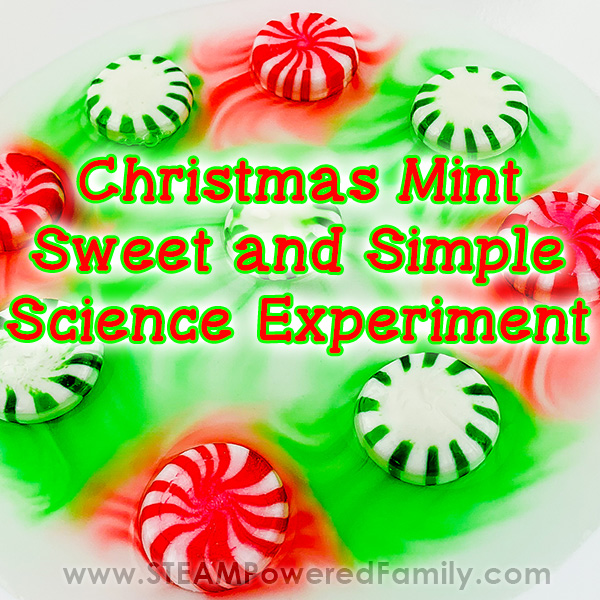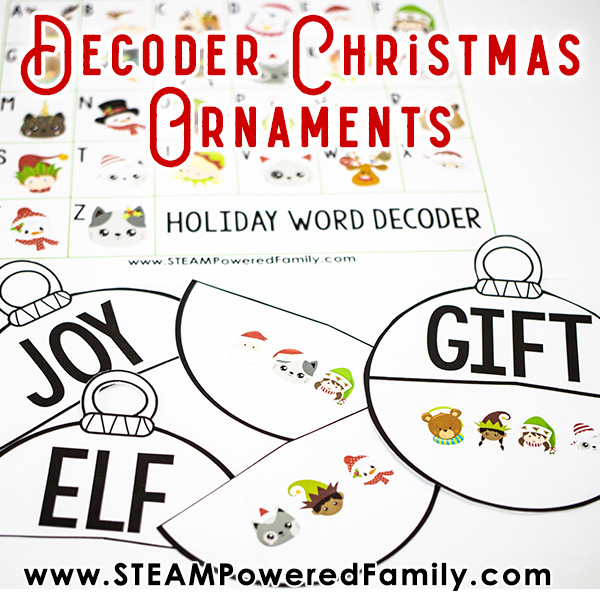Simple Christmas Chemistry
Ready for a fun and simple experiment that will have your kids exploring chemical reactions this holiday season? In this chemistry experiment we embrace a love of the holidays to create an activity that kids simply can’t resist! Using items from the kitchen pantry, we create a spectacular science display that kids from preschool through middle school will enjoy.
Christmas Chemistry Experiment
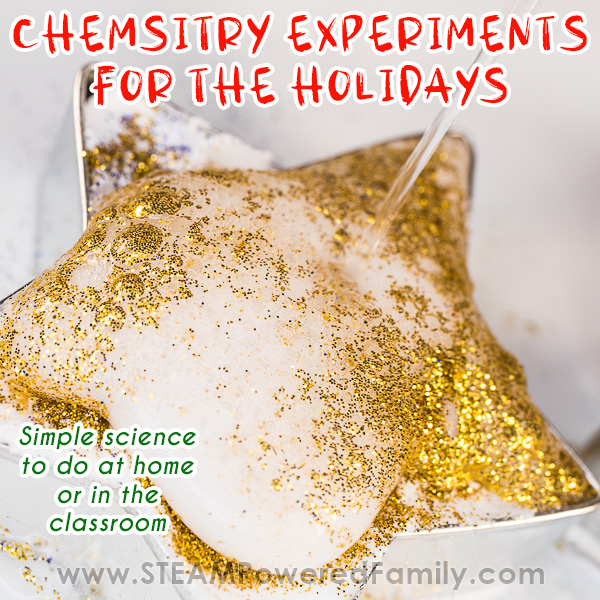
Disclaimer: This article may contain commission or affiliate links. As an Amazon Influencer I earn from qualifying purchases.
Not seeing our videos? Turn off any adblockers to ensure our video feed can be seen. Or visit our YouTube channel to see if the video has been uploaded there. We are slowly uploading our archives. Thanks!
When it comes to science, sometimes I like to keep things really simple. Yes we love a great circuit activity or more complex projects that really stretch our critical thinking skills.
But some days I want projects that foster independence.
Which means I can sit back with a cup of tea and let my kids enjoy exploration and discovery with their science.
I know many of our STEAM Powered Family readers also love simple activities they can do with younger kids, or perhaps they have a classroom of students and need projects the kids can do independently.
Virtual schooling also presents challenges, as the kids need to be able to do the activities without direct adult supervision, and the supplies need to be readily accessible and budget friendly.
This project wins for all of those situations!
Our inspiration for this experiment came from our popular Fireworks experiment we did in the summer. Now we have given it a Christmas twist!
Simple Christmas Chemistry
Supplies
Cookie Cutters in Christmas Shapes
Dish, shallow bowl, pie plate – anything with a bit of a lip on it.
Small bowl
Syringe or dropper (a teaspoon would work too!)
Food colouring (red and green)
Baking Soda (aka Sodium Bicarbonate)
Vinegar
Glitter (we recommend biodegradable to protect the environment, however this is also optional)
*A NOTE ON GLITTER – Glitter has become very controversial due to the negative impacts on the environment, but I know many of you still love a little sparkle in your projects! When it comes to glitter, I believe it is always optional. None of my projects require it. But if you decide you do want a little sparkle and shine in your creations, I highly recommend using a biodegradeable glitter. There are lots of fantastic options available.
Directions
Place the cookie cutter on the dish.
Fill the cookie cutter with baking soda. Use your fingers or a teaspoon to press it down and make sure you fill all the nooks and crannies. You want the cookie cutter to be between 50 – 75% full.
Add a few drops of food coloring in the pattern of your choice.
Sprinkle glitter over the top.
Fill a small bowl with vinegar (white vinegar is best but any will work).
You are now ready for the chemical reaction!
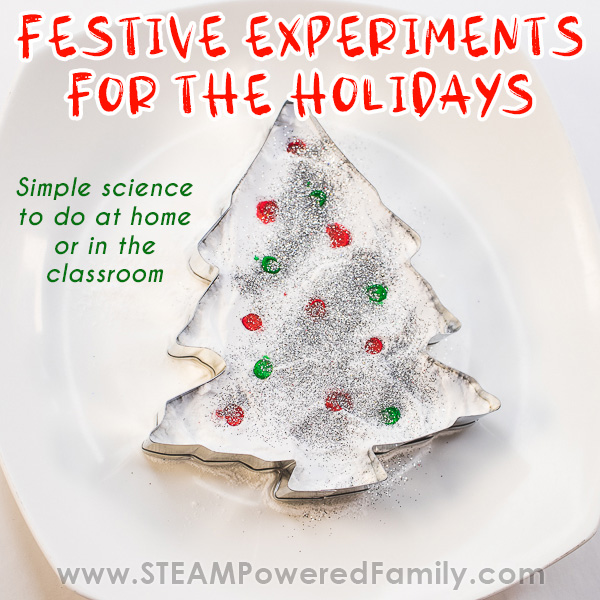
The Chemical Reaction
I always like to stop at this point and talk to my kids about the project and get them to make their hypothesis. By integrating the Scientific Method into our studies in such an organic and natural way, it encourages children to be natural scientists. Who are always thinking logically and critically during their experiments. The Scientific Method becomes an automatic way of thinking about their studies and work.
Now you have your hypothesis, have the kids fill their syringe (or dropper or teaspoon) with vinegar and add it to the top of baking soda in the cookie cutter.
Watch what happens!
The Science
You can’t do these experiments without explaining the science! Kids are curious and when we share these principles in simple, fun, approachable ways it builds an strong foundation for their future studies. It always amazes me the incredible, curious minds of kids, and the thoughtful and interesting questions they ask as we do science together.
This activity explores the popular baking soda and vinegar reaction, which is a simple acid-base chemical reaction. Vinegar or Acetic Acid has the chemical formula C2H4O2. Baking soda is a base also known as Sodium Bicarbonate and has the chemical formula NaHCO3. One of the products of this reactions is sodium acetate (NaC2H3O2). Sodium acetate is made of 1 sodium ion, 2 carbon atoms, 3 hydrogen atoms, and 2 oxygen atoms. The other products are water (H2O) and carbon dioxide (CO2). Carbon dioxide is the gas that causes the bubbling during the reaction.
Chemical Formula of Baking Soda and Vinegar
C2H4O2 + NaHCO3 -> NaC2H3O2 + H2O + CO2
vinegar + sodium bicarbonate -> sodium acetate + water + carbon dioxide
This is a fun and simple activity for kids to do during the holidays. For another fun twist on this project, check out this Christmas Tree Chemistry activity inspired by our Dino Eggs project.
